Redating Revelation
64 AD or 95 AD?...
“7 Surely the Lord God will do nothing, but he revealeth his secret unto his servants the prophets.”
— The Book of Amos 3:7 KJV
The Wolves Within is a must-read for every believer who refuses to be deceived.
Hit the Tip Jar and help spread the message!
This post contains affiliate links, which means I may receive a commission or affiliate fee for purchases made through these links.
Unlock the mysteries of Biblical cosmology and enrich your faith with some of the top rated Christian reads at BooksOnline.club.
Click the image below and be sure to use promo code SCIPIO for 10% off your order at HeavensHarvest.com: your one stop shop for emergency food, heirloom seeds and survival supplies.
Related Entries
Barring the Crucifixion of Jesus Christ, the destruction of the Second Temple is the most prophesied and pivotal event within the New Testament — signaling the end of the Old Covenant and the triumph of the Messianic Covenant (Heb. 8:13).
70 AD is not just a historical marker; it is arguably the theological fulcrum of the Old & New Testaments. The fall of Jerusalem stands as a monumental event — second only to the Crucifixion of Christ in its importance within Christian eschatology and history. Understanding its significance requires a thorough examination of the prophetic messages that heralded this catastrophe and its role in the transition from the Old Covenant to the New.
The prophecies of Jesus Christ, John the Baptist, Malachi, and Zechariah provide a profound backdrop for understanding this watershed moment in Biblical history. Malachi, as the last prophet of the Old Testament, provides for us a critical link between the Old and New Covenants. In Malachi 3:1, he proclaims:
1 Behold, I will send my messenger, and he shall prepare the way before me: and the Lord, whom ye seek, shall suddenly come to his temple, even the messenger of the covenant, whom ye delight in: behold, he shall come, saith the Lord of hosts.
The “messenger of the covenant” is universally understood to be a reference to Christ, who comes to His Temple after His messenger prepares the way for Him.
In Malachi 4:1, this vision becomes even more dire for the inhabitants of the land (emphasis mine):
1 For, behold, the day cometh, that shall burn as an oven; and all the proud, yea, and all that do wickedly, shall be stubble: and the day that cometh shall burn them up, saith the Lord of hosts, that it shall leave them neither root nor branch.
As I previously discussed in That Wicked Generation:
The imagery of the root and the branch is one seen throughout both the OT and NT as a repeated symbol for the physical Israel. That wrath the Baptizer foretells of in Matthew 3:7, orgē in the Greek, is the same word for wrath that Paul speaks of in I Thessalonians 2:16. This warning by John of the baptism by hellfire that was to come is nearly verbatim what Malachi would prophesy roughly 420 years before the birth of Christ…
The Archangel Gabriel, the messenger of the Christ, explicitly confirms that this prophecy is about John the Baptist in Luke 1:13-17. Indeed, it is on no less authority than Christ’s that we are told that John the Baptist is the second coming of Elias (the Hellenic form of Elijah) in Matthew 17:10-13.
The coming of the Lord to His Temple, followed by the judgement of His people, therefore signifies the end of the Old Covenant, Judaic era and the establishment of that New Covenant through Christ.
Zechariah was a prophet of the post-captivity era, offering us yet another crucial perspective on the prophetic expectations surrounding Jerusalem’s fate after the Babylonian exile. Zechariah 11:10-11 states (emphasis mine):
10 And I took my staff, even Beauty, and cut it asunder, that I might break my covenant which I had made with all the people.
11 And it was broken in that day: and so the poor of the flock that waited upon me knew that it was the word of the Lord.
I have previously discussed the gravity of this symbolism, as the staff called Beauty is a symbolic representation of the Temple (1 Ch. 16:29, 2 Ch. 20:21, Psa. 29:2, Psa. 96:9), a signifier of the Old Covenant and its passing away. These scenes from Zechariah would vividly play out throughout the destruction of Jerusalem.
— The Destruction of the Temple of Jerusalem, 1867, ill. by Francesco Hayez.
The significance of 70 AD in New Testament prophecy cannot be overstated: it serves as a visible sign of the end of the Old Covenant and the confirmation of the Messianic Covenant. Jesus Christ’s prophecies regarding the destruction of Jerusalem are among the most detailed and significant in the New Testament. In His Olivet Discourse — recorded in Matthew 24, Mark 13, and Luke 21 — Jesus provides a vivid portrayal of the events leading up to the fall of Jerusalem.
John the Baptist, as the second coming of Elijah, heralded this very judgment. Just as Malachi’s prophecy spoke of a day of reckoning for Israel, John’s message served as a precursor to the fulfillment of these prophecies — setting the stage for the pivotal events of 70 AD and the visible transition to the Messianic Covenant. The comprehensive nature of the prophecies concerning this event — spanning from Christ’s predictions to John’s visions and the anticipations of Malachi & Zechariah — demonstrates its pivotal role within eschatology.
The fall of Jerusalem and the destruction of the Temple signified the end of an era and the fulfillment of those long-awaited prophecies. It marks, for all the flock to see, the transition from the Old Covenant’s sacrificial system to the New Covenant established through Christ’s sacrifice (Heb. 9).
This transition and its significance is central to understanding the theological implications of 70 AD and its role in the broader narrative of Biblical prophecy — particularly as it involves the dating of John’s Apocalypsis.
“3 Blessed is he that readeth, and they that hear the words of this prophecy, and keep those things which are written therein: for the time is at hand.”
— Apocalypsis 1:3 KJV
The contention for a later date of the writing of the Book of Revelation, typically placed around 95 AD during the reign of Emperor Domitian, stands on a shaky foundation when scrutinized through the lens of historical and textual criticism. This theory is largely rooted in the testimony of Irenaeus, an influential second-century Church father. However, it is essential to dissect the origins and implications of this dating theory to understand its inherent weaknesses and the broader implications for the interpretation of Revelation.
Irenaeus, writing around 180 AD, is frequently cited as the primary and earliest source for the later dating of Revelation. According to Irenaeus (emphasis mine):
We will not, however, incur the risk of pronouncing positively as to the name of Antichrist; for if it were necessary that his name should be distinctly revealed in this present time, it would have been announced by him who beheld the apocalyptic vision.
For it [or he -SE] was seen not very long time since, but almost in our day, towards the end of Domitian’s reign.
– Irenaeus of Lyon, Against Heresies Book V, Ch. 30.3
This assertion by Irenaeus is arguably the most crucial piece of extra-Biblical evidence used to bolster the later dating of John’s Revelation. However, a critical examination reveals that the interpretation of this statement is fraught with ambiguities and even theological biases.
The Greek article used by Irenaeus, ὁ (ho), can be translated as “he” or “it,” depending upon the context. This ambiguity in the Greek language is compounded by the influence of Eusebius, the early Church historian who expressed skepticism about the authenticity of Revelation. Eusebius' distrust almost certainly colored his interpretation of Irenaeus, leading to a faulty translation of this passage that was perpetuated by numerous patristic writers; such as Victorinus (Late 3rd Century) and Jerome (320-420). Eusibius’ doubts regarding the canonicity of Revelation may have contributed to this erroneous rendering of ὁ (ho) that places the appearance of the Revelation during Domitian’s reign rather than the Revelator. Furthermore, Robert Young’s Analytical Concordance on Revelation notes that the name of this emperor has been mistranslated, as the name of the emperor given by Irenaeus is Dimitius (Domitianou) — the birth name of Nero, not Domitian (Domitianikos).
This of course assumes that Irenaeus is faithfully representing the witness of his teacher Polycarp, an assumption that can not so readily be made given that Irenaeus also claimed, as apostolic tradition, the belief that Jesus was fifty years old before his Ascension.
That point aside, this would mean that the preponderance of the textual evidence in this passage actually affirms the earlier dating, not the latter.
— The Destruction of the Temple at Jerusalem II, 1637, ill. by Nicolas Poussin.
Additionally, it is instructive to consider the broader implications of Irenaeus’ dating. If Revelation were indeed written under Domitian, it would imply that the prophecies contained within it were directed towards a context significantly removed from the destruction of Jerusalem in 70 AD. This would mean that the book's references to the fall of Jerusalem and the judgment upon Israel would be seen as predictive of a distant future event, rather than the immediate crisis faced by first-century Christians within the Roman Empire. Such an interpretation creates a disconnect between the text’s urgent warnings and the historical realities of the time, which we will explore shortly.
The reliance on Irenaeus and Eusebius for the later dating of Revelation reveals a problematic reliance on a questionable tradition and an interpretation that has more than likely been influenced by theological bias rather than the textual evidence. The ambiguity of the Greek article ὁ (ho) and Eusebius' distrust of Revelation as inspired Scripture only adds to the complexity and potential inaccuracies in the later dating argument.
In conclusion, relying on the admittedly conflicting patristic witness for the later dating of Revelation fails to withstand rigorous scrutiny.
“2 And Jesus answering said unto him, Seest thou these great buildings? there shall not be left one stone upon another, that shall not be thrown down.”
— The Gospel of Mark 13:2 KJV
In the debate over the dating of the Book of Revelation, the internal evidence presents a formidable case against the theory that it was penned during the reign of Domitian in 95 AD. While both camps can sling quotes at one another or quibble on why the historical context of 60 or 90 AD is more fitting for the events described, these considerations should all be secondary to what the text states first and foremost. A careful examination of Revelation's lexical usage and thematic elements — particularly key verses in Revelation 1, 10, 11, 17, and 22 —reveals a compelling argument for an early date, likely during the beginning of Nero’s persecutions of the Church in the Summer of 64 AD.
The term ἐγγύς (engys) plays a pivotal role in understanding Revelation's urgency to its immediate audience. This Greek word is employed in over a dozen verses of Scripture (incl. Matt. 26:18; John 2:13, 6:4, 7:2, 11:55 & the Olivet Discourse), all of which clearly underscore the immediacy of the events described as “nigh” or “at hand.” In Revelation 1:1, John is instructed to convey “things which must shortly come to pass.” The term “shortly,” or ἐν τάχει (en tachy) in the Greek, means "swiftly” or "soon." Revelation 1:3 further pronounces a blessing upon those who read, hear, and keep the words of the prophecy “for the time is at hand.” Here, ἐγγύς (engys) is used again, reinforcing the idea that the prophetic messages contained in the book are meant for immediate fulfillment. This is not a vague or distant promise: it is a direct and urgent proclamation intended for seven real churches facing imminent trials and challenges (Rev. 1:4). While ἐν τάχει (en tachy) could imply a suddenness of action instead of a temporal one, when paired with ἐγγύς (engys), it only further emphasizes that the events described by John are indeed imminent.
In Revelation 22:10, the angel commands John not to “seal the sayings of the prophecy of this book: for the time is at hand [ ἐγγύς, engys].” This directive contrasts sharply with Daniel 12:4, where Daniel is instructed to “shut up the words, and seal the book, even to the time of the end.” The sealing in Daniel signifies a distant fulfillment, the end of the Jewish age which John is foreseeing on Patmos: contrast this with the open nature of the Apocalypsis which indicates that its messages are urgent. This distinction only highlights that Revelation’s prophecies were meant to address the immediate concerns of its audience rather than distant events.
Further support for this interpretation is found in Revelation 10:11, where John is told, “Thou must prophesy again before many peoples, and nations, and tongues, and kings.” The Greek verb προφητεύσω (prophēteusō) here conveys a sense of ongoing, immediate action, aligning with the temporal urgency established by earlier passages. Given that John would shortly die after receiving this revelation (~96 AD), it seems highly unlikely that a nearly 100 year old Apostle would be traversing the Roman empire once again in such a short time frame without any patristic witness to confirm said travels. This only further reinforces the notion that the book’s messages are not intended for a far-off future generation, but the one in which Christ prophesied the judgement would come upon.
— St. John at Patmos (Rev. 1:9), ill. by Gustave Doré.
Of particular significance to this case is the succession of kings seen in Revelation 17:10. The angelic messenger interprets the seven-heads as both seven hills and seven rulers, saying: “five are fallen, one is, the other is not yet come; and when he comes, he must remain a short time.” This cryptic statement has long been understood to refer to a sequence of rulers contemporary with the Apocalypse’s writing: the puzzle of which kings has direct bearing on the date of John’s Revelation. A compelling case emerges when we align these seven rulers with the first seven Roman emperors, bolstering the view that John received his visions under Nero (the “one is”), not decades later under Domitian.
When John hears “five are fallen,” the most natural referent for an audience in the 60’s AD would be the first five rulers of the Roman Empire. The city on seven hills (Rev. 17:9) is unequivocally Rome, and thus its kings are the Caesars. Counting from the dawn of the imperial era, the five fallen are:
Julius Caesar
Augustus (Octavian)
Tiberius
Caligula (Gaius)
Claudius
Though not an emperor by title, Julius Caesar was regarded as the first of the Caesars by Suetonius and later secular historians (Suetonius, The Twelve Caesars), although his contemporary Tacitus does not. By the mid-60’s AD, these five had “fallen” – all were dead. This sequence and number would be obvious to readers in John’s time, as is evidenced by the “overwhelming presence” of Nero in early commentaries on John’s Revelation (Grumerlock). Any later scenario struggles to find only five preceding rulers, since, by Domitian’s reign, ten or more emperors had come and gone. Thus, the internal evidence immediately points to the Neronic era when precisely five past emperors were fallen.
Revelation 17:10 continues: “the other is not yet come; and when he comes, he must remain a short time.” This refers to the seventh king, the one who would follow the current ruler. If the “one is” equals Nero, then the next to come was Galba, who seized power after Nero’s demise in June of 68 AD. Strikingly, Galba’s reign was extraordinarily brief – roughly seven months, ending in his assassination. The prophecy of a short-lived seventh king finds a perfect fulfillment in Galba’s few months on the throne. By identifying Galba as the seventh head, the early-date reading gains even more coherence. John, writing under Nero, prophesies that the next emperor “is about to come” but will not last long, and history bears this out.
Early Christian interpreters understood this, too, in light of a popular first-century belief: the Nero Redivivus myth. According to Roman sources, after Nero’s death there were rumors and impostors claiming that Nero had returned (even two decades later under Domitian). The idea of Nero’s “revival” – a dead tyrant reappearing as an almost demonic force – indeed fits the language of Rev 17:11.
John elsewhere alludes to Nero in thinly veiled terms. The infamous “number of the Beast”, 666 (Rev. 13:18), corresponds to Nero Caesar in Hebrew gematria, a fact noted by early Christian writers. The later Church Father Victorinus, in his exposition of John’s Apocalypsis, explicitly identifies the Beast who “was, and is not, and shall ascend” with Nero:
11. And the beast which you saw is of the seven. Since before those kings Nero reigned.
And he is the eighth. He says only when this beast shall come, reckon it the eighth place, since in that is the completion.
— Victorinus, Commentary on the Apocalypse
This is the earliest extant Christian commentary on Revelation, and it shows that by the late 3rd century the Nero Redivivus interpretation was already established in Christian exegesis. Some interpreters, including Dr. Gentry, have suggested that the eight finds its fulfillment in Vespasian, since he had been a loyal general under Claudius and Nero and established the Flavian dynasty in 69 AD, and this interpretation is certainly plausible as well.
Thus, both John’s immediate audience and later exegetes saw Nero looming behind the text.
— The Destruction of the Temple, 1830-1840, ill. by Samuel Colman
Central to the understanding of Revelation’s dating is the fulfillment of Daniel’s prophecy concerning the seventy weeks. In Daniel 9:24, the prophecy outlines a period of seventy weeks of seven years decreed upon Israel “to finish the transgression, and to make an end of sins, and to make reconciliation for iniquity, and to bring in everlasting righteousness, and to seal up the vision and prophecy, and to anoint the most Holy.” I have thoroughly explored why this prophecy was miraculously fulfilled with the first advent of our LORD in The Wolves Within, Part IV, so I will not belabor that point here; but suffice to say, the proper understanding of Daniel’s prophecy provides yet another crucial Scriptural evidence for the closing of the Biblical canon in 70 AD.
The final week of this prophecy is marked by the destruction of the city and sanctuary, serving as that critical marker for the ultimate culmination of Biblical prophecy. Athanasius the Confessor interprets Gabriel’s message in this same manner (emphasis mine):
When did prophet and vision cease from Israel? Was it not when Christ came, the Holy One of holies? It is, in fact, a sign and notable proof of the coming of the Word that Jerusalem no longer stands, neither is prophet raised up nor vision revealed among them. And it is natural that it should be so, for when He that was signified had come, what need was there any longer of any to signify Him? And when the Truth had come, what further need was there of the shadow? On His account only they prophesied continually, until such time as Essential Righteousness had come, Who was made the Ransom for the sins of all. For the same reason Jerusalem stood until the same time, in order that there men might premeditate the types before the Truth was known. So, of course, once the Holy One of holies had come, both vision and prophecy were sealed.
— Athanasius I of Alexandria, On the Incarnation of the Word, Ch. 39
The destruction of Jerusalem in 70 AD vividly aligns with this prophetic marker, signifying the cataclysmic end of the Old Covenant and the transition to the Messianic Covenant.
Revelation’s internal evidence, including the use of ἐγγύς (engys) and references to an existing Temple, provides us a significantly more coherent witness than that proffered by futurists of all stripes — particularly dispensationalists. Only by tying Revelation’s message to the immediate crisis that would be faced by the early Church can we can begin to properly exegete this vitally important prophetic work. This error is seen in the denial of the fulfillment of Daniel’s seventy weeks prophecy, as it serves as a key Scriptural witness for the closing of the canon in relation to the events of 70 AD. Coupled with the Revelator’s detailed descriptions of an existing Temple in Jerusalem (Rev. 11:1-2, 8), as well as the imminent judgment upon Jerusalem that was prophesied by our LORD, this grammar and these verses are only consistent with an early dating of the book.
“One of the oddest facts about the New Testament is that what on any showing would appear to be the single most datable and climactic event of the period - the fall of Jerusalem in AD 70, and with it the collapse of institutional Judaism based on the temple - is never once mentioned as a past fact.”
— John A. T. Robinson, Redating the New Testament
It is astonishing how this cataclysmic event, so crucial to Christian eschatology and history, is glaringly absent from the Book of Revelation if we are to believe it was written after 70 AD.
The question of dating Revelation cannot be divorced from this monumental omission. It is inconceivable that the most prophesied event in the New Testament, one which looms large over the horizon of Christian prophecy, would not be validated by the Holy Spirit in a book supposedly penned after its occurrence. To suggest that John wrote Revelation post-70 AD, and yet neglected to mention the destruction of the Temple — a subject central to the prophetic discourse of Jesus Christ — defies credulity.
It would be akin to writing a comprehensive history of the Napoleonic Wars without a single mention of Waterloo — an omission so glaring it would render the account utterly deficient. For a book that futurists claim reveals the apocalyptic destiny of a reconstituted Israel and the fate of a rebuilt Temple, such a lapse is nothing short of stunning to me. The glaring omission of this event is not merely an oversight, but a fundamental flaw in the argument for a later dating.
In sum, the failure to acknowledge the destruction of the Temple within the context of a late-dating theory for Revelation is not merely an oversight; it is a profound misstep in understanding the text’s true message and significance. The book’s internal evidence unequivocally supports an early dating, aligning with the immediate concerns and crises faced by the first-century Church.
It is particularly ironic that premillennialists and dispensationalists, nearly all of which would champion Sola Scriptura as I do, seem to flagrantly disregard the internal evidence of Revelation. Their failure to address Revelation’s clear indications of imminent fulfillment reflects a fundamental inconsistency in their hermeneutical methods. Their eschatological framework relies heavily on speculative interpretations, external sources, and dubious patristic testimonies while conveniently ignoring or explaining away the book’s own clear and immediate temporal indicators. These groups, many of whom decry any deviation from the “plain meaning” of the text, are embarrassingly selective when it comes to the dating of Revelation. It is as if they have chosen to disregard the very principles they claim to uphold, preferring instead to manufacture a futuristic framework that aligns with their eschatological agenda rather than the text’s explicit message.
This approach is nothing short of a theological sleight of hand, wherein the principle of Sola Scriptura is upheld — except, it seems, when it conflicts with their predetermined eschatological preferences.
— Redating Revelation, digital art, 2024.
“The resolution of the question of the dating of Revelation has far-reaching practical implications for the average Christian. … The importance of Revelation for eschatological inquiry lends it an especially influential role in the development and implantation of a Christian worldview. Hence, it is of grave ethical and cultural significance in that it impacts on the Christian’s view of history.”
— Kenneth L. Gentry, Before Jerusalem Fell
The Wolves Within is a must-read for every believer who refuses to be deceived.
Hit the Tip Jar and help spread the message!
This post contains affiliate links, which means I may receive a commission or affiliate fee for purchases made through these links.
Unlock the mysteries of Biblical cosmology and enrich your faith with some of the top rated Christian reads at BooksOnline.club.
Click the image below and be sure to use promo code SCIPIO for 10% off your order at HeavensHarvest.com: your one stop shop for emergency food, heirloom seeds and survival supplies.




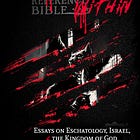

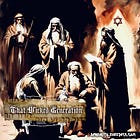


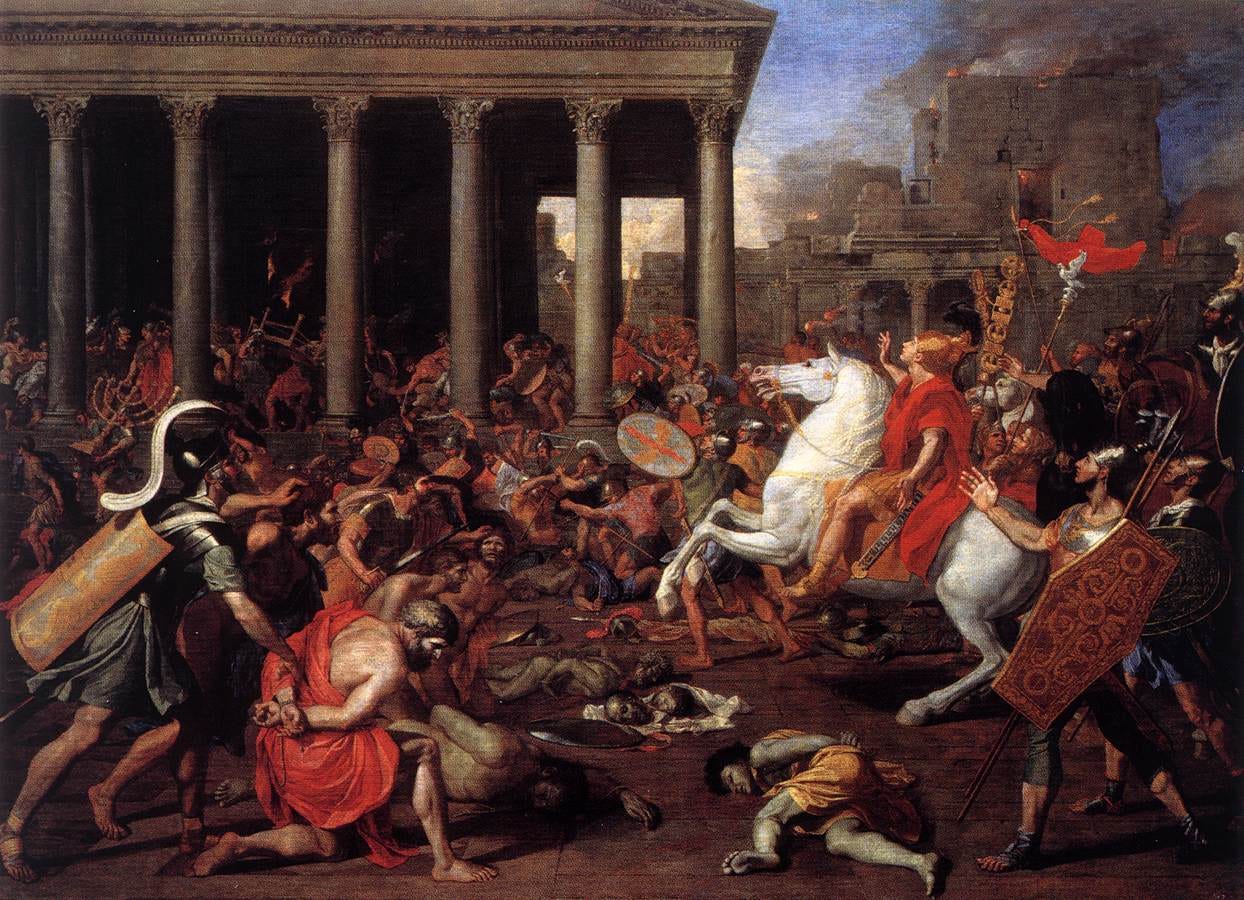

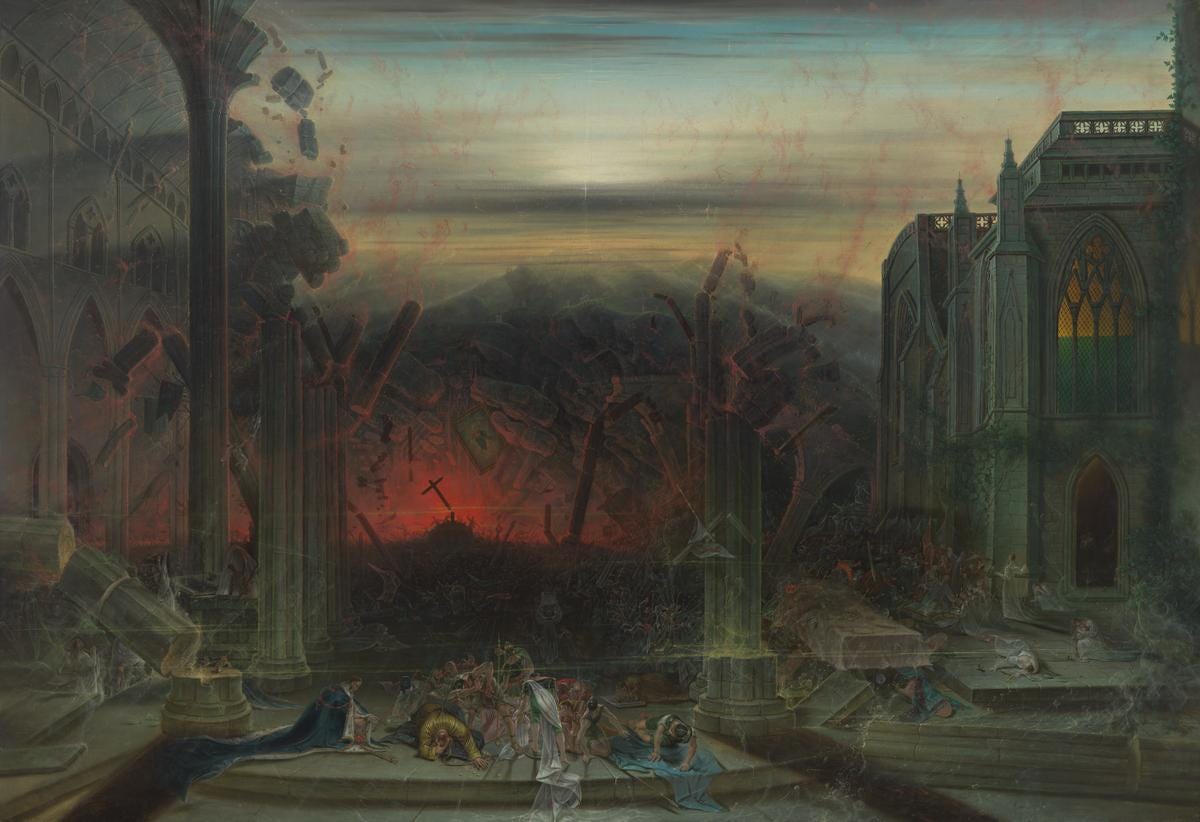
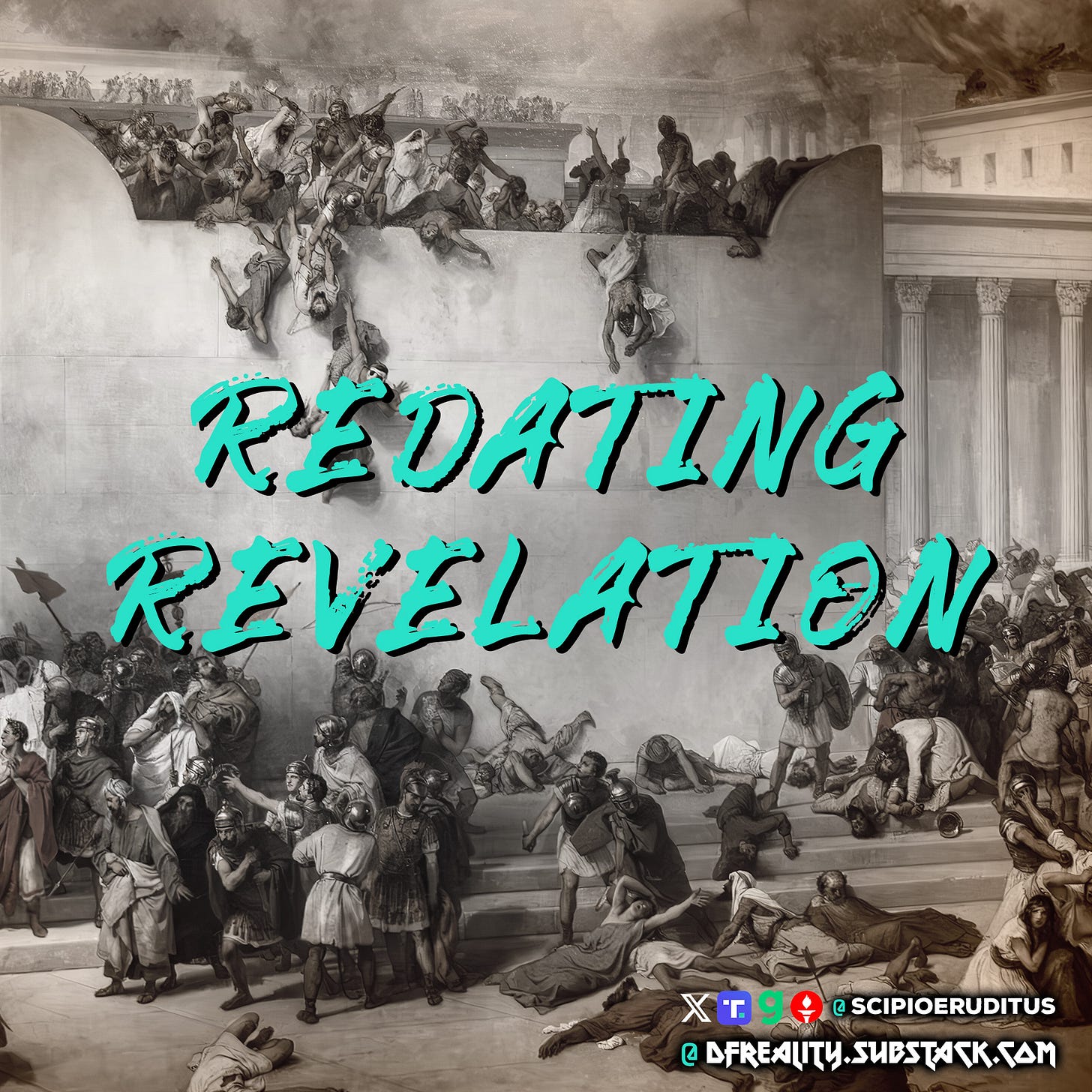
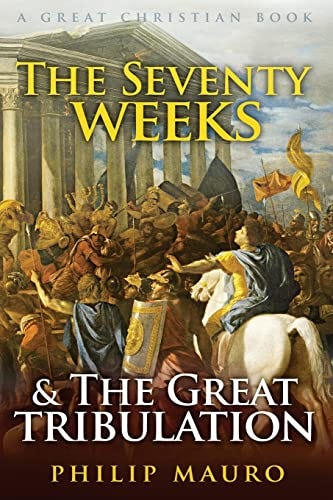


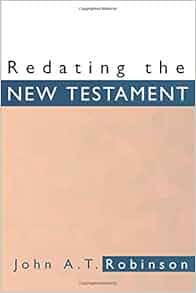
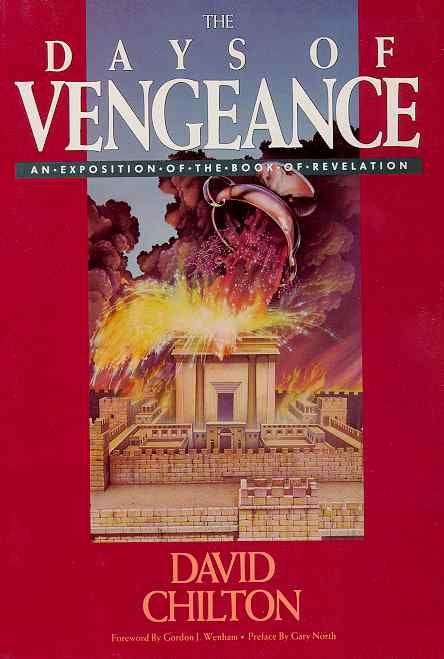
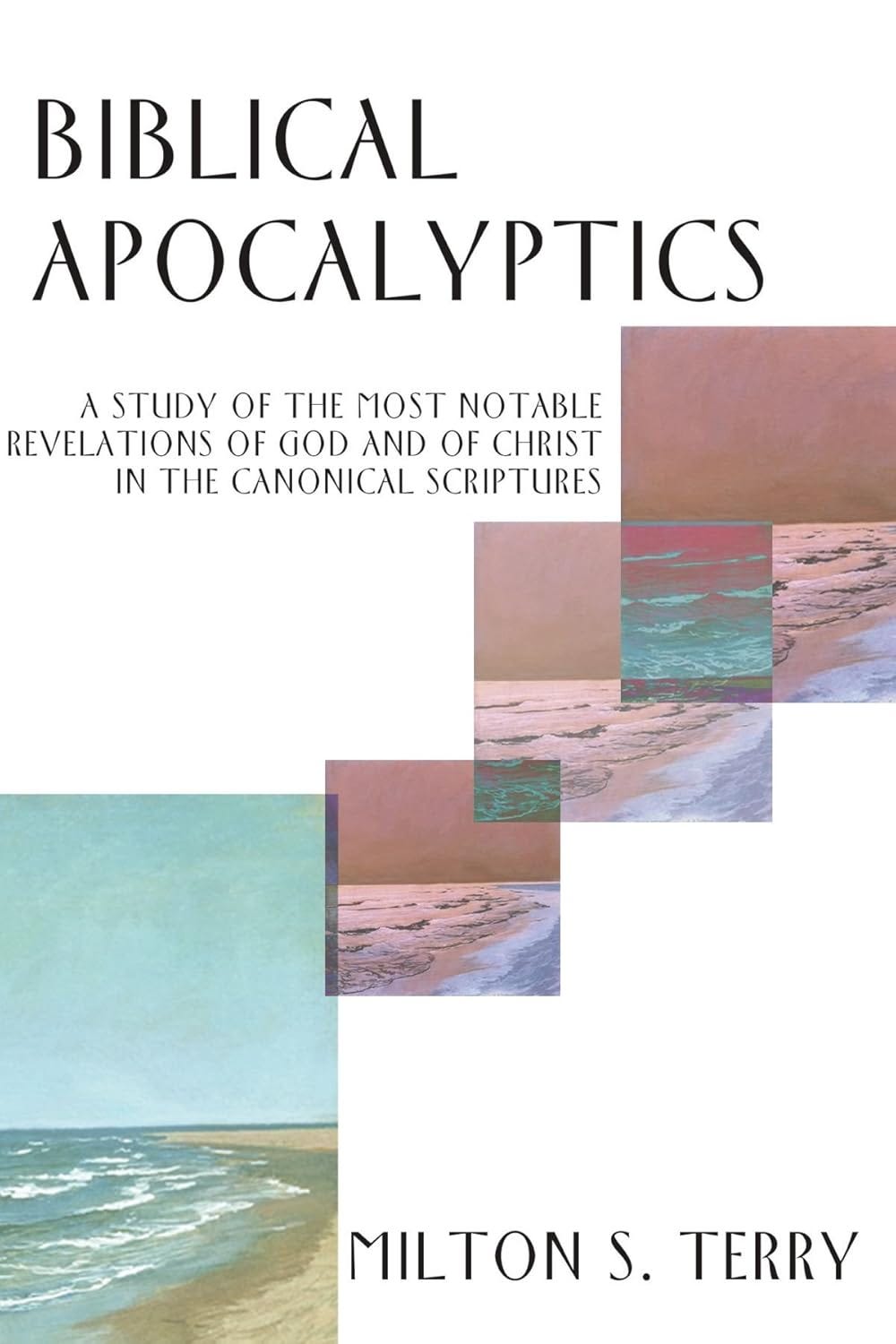
I think there's a lot of mix-ups regarding the fulfillment of Revelations and prophecies regarding the end of the age.
I'm not going to get into a research paper here though I might write an essay for that, but in broad strokes I see the most sensible understanding of the topic is what I would call partial fulfillment.
Starting from Matthew 24:3, we see the disciples asked 3 questions at once and Jesus answered it with ambiguity regarding the separate parts. This is one of the most confusing verses in the whole Bible, but when you read it as Jesus somewhat cryptically answering multiple questions at once it makes much more sense.
As you point out, the end of the age and transition to the new covenant was with the destruction of the temple in 70 ad. This fulfilled much prophecy, but not all. The literal, physical return of Jesus and his millennial reign is absolute, you have to chuck out as much of scripture as dispensationalists to reach the conclusion that we're already there and everything was fulfilled, which is the *preterist view but it makes no sense.
The way the holy Spirit and my study has shown me to interpret is that the end of the age of Israel is parallel, and very much like the final end of the age, but there is a second end of the age that is prophesied and detailed especially in Revelation. This is the end of the age for the Brit Chadasha, or new covenant, and the entire world and is beginning to be fulfilled before our very eyes. Don't be deceived into thinking Christ won't or already has returned.
2 Thessalonians 2:3, "Let no man deceive you by any means: for that day shall not come, except there come a falling away first, and that man of sin be revealed, the son of perdition;"
Matthew 24:26-27 "Wherefore if they shall say unto you, Behold, he is in the desert; go not forth: behold, he is in the secret chambers; believe it not. For as the lightning cometh out of the east, and shineth even unto the west; so shall also the coming of the Son of man be"
Fascinating. And it makes sense, it really does. But leaves a multitude of other questions lol.